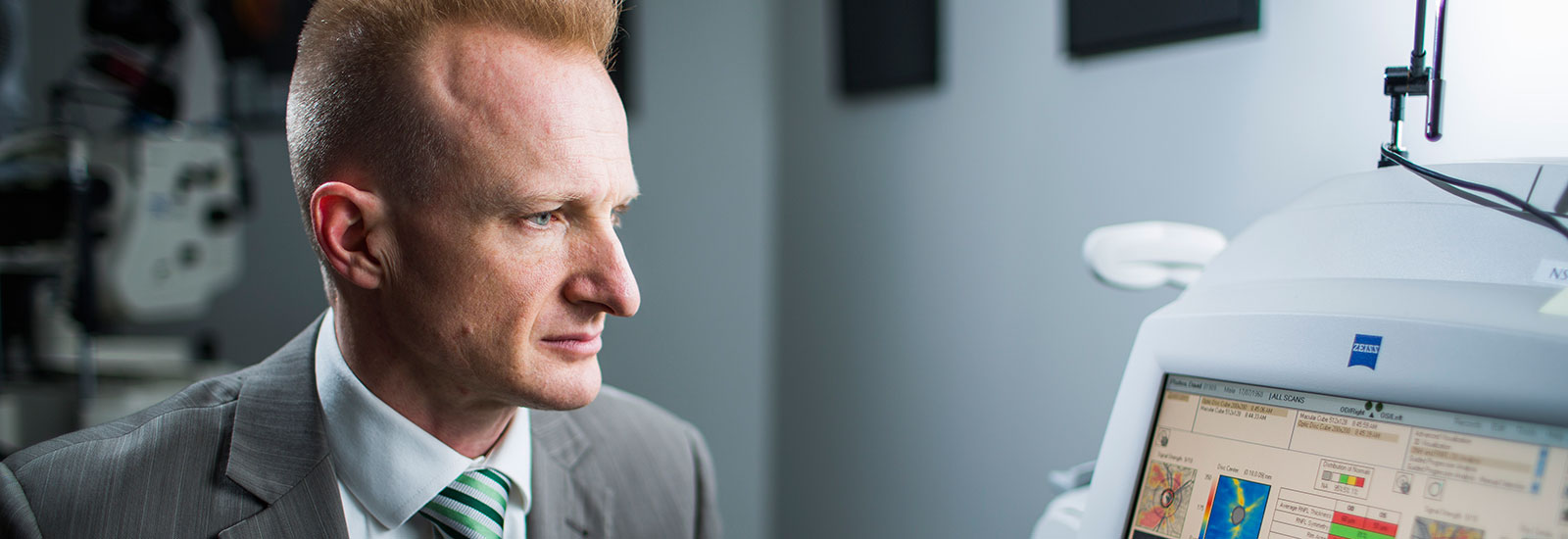







A cataract is an opacity in the natural lens of the eye, which alters a person’s vision to the point that it impacts on their daily activities. It can sometimes be associated with other conditions (such as diabetes or previous surgery), but the majority of the time it is due to the normal aging process. If left untreated it can lead to significant vision loss, but it may be treated surgically at any stage depending on the patient’s wishes.

Cataract: courtesy of National Eye Institute, National Institutes of Health
The lens gradually becomes cloudy over time with advancing age. This may be observed when a patient is examined at the slit-lamp microscope. Your optometrist or ophthalmologist can see this cloudiness in the lens long before it begins to affect your vision. Over time you may be able to notice a change in your vision, with daily tasks (such as reading the newspaper or magazines, reading writing on the TV, or reading the names of streets when driving the car) becoming more difficult. When the change in your vision starts to impact on your daily activities, you may consider surgery to remove the cloudy lens and replace it with a new artificial lens.
Surgery conventionally involves making a small incision in the peripheral cornea under local anaesthesia. Laser may be used to perform these steps, however it has been shown to provide no benefit to the patient or improvement to the outcomes and has a significant cost attached to it. The lens is then extracted using an ultrasound phacoemulifier and it is replaced with an artificial intraocular lens. Surgery conventionally involves making a small incision in the peripheral cornea under local anaesthesia, extracting the lens using an ultrasound phacoemulifier and then replacing it with an artificial intraocular lens. A monofocal artificial lens can be selected to allow good distance vision, but you will still require reading glasses for near-work. Alternatively, a multifocal intraocular lens may be used to allow good vision at both distance and near-work. In addition, astigmatism (unevenness in the cornea) can be treated using a toric intraocular lens. The accuracy of a toric intraocular lens alignment can be improved by the use of virtual display technology, such as the Verion Image Guided System.

Certain conditions may affect the eye and make surgery more complicated. These include a condition called pseudo-exfoliation, this weakens the supports for the lens and can lead to high intraocular pressure and glaucoma. Inflammation in the eye (uveitis) may lead to the early formation of a cataract with the pupil becoming stuck to the lens. Narrow drainage channels in the eye are often associated with a very large lens which causes a reduction in the space within the eye; in these circumstances, cataract surgery can often open the drainage channels and help to control the intraocular pressure better. As a glaucoma surgeon, I have encountered all of these conditions many times and am prepared to manage them ensuring a successful outcome.